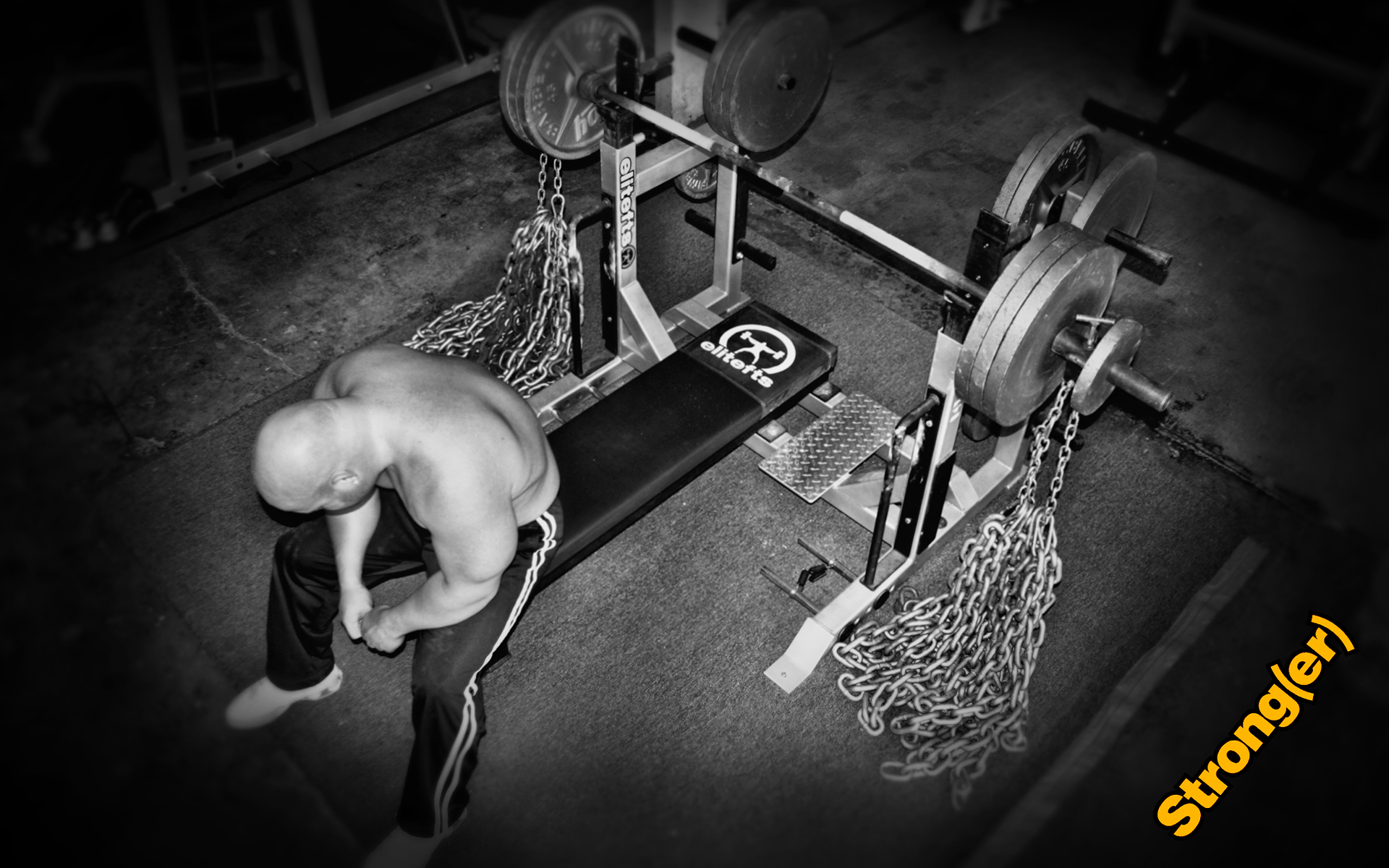
How to bench press after a major pec tear is one of the questions submitted when I asked for Blog ideas on my Instagram account.
The first thing that I want to put out there is I'm not a doctor, not a physical therapist, and I'm not qualified to give any physical therapy rehab or any medical advice. All I can speak on is what I've done for myself in the past. I have ruptured both pecs, have torn my left pec tendon off of the humerus and had to have it reattached. There was extensive damage to clavicular and sternal head at both origins and insertions. The surgeons fixed what they could, but some couldn't be fixed.

By Braus, Hermann - Anatomie des Menschen: ein Lehrbuch für Studierende und Ärzte, Public Domain, https://commons.wikimedia.org/w/index.php?curid=29965777
It tore from the bone and tore the muscle. The left pec injury was a total mess. The right pec tore in half through the muscle belly. The tendon was still attached but frayed. The right one did bleed out like you see with most of the pec tears. With bruising all the way down to the wrist. The left one, where the tendon came out, and the pec basically exploded, didn't bruise at all. But there was a complete loss of function. I was not able to move my arm at all. We're talking about two entirely different types of pec tears.
Then there's a third type that I've experienced, probably 100 times. Which I will define as tearing of the scar tissue or a slight muscle pull. That would be where pec pops. There's a loss of function. Usually, I used to take a week off and then come back slowly and would be fine. Over time I found ways to overcome that and not have to miss any bench days because of that situation. The popping-tearing of the muscle/tendon happened the most after surgery because there was so much scar tissue built up.
There are some commonalities between all of these. To note, I did have many pec strains before the first major tear and with those I just kind of ignored them. It would bruise so I did basic icing and took my time coming back, moved my grip in, and added in more direct pec work and "pre-hab". I did what a lot of people still recommend now, which didn't work, as it paved the way to two major tears, one being so bad I was told I would never bench 400 pounds again and was lucky if I regained normal function of my arm. What I did worked for the short term but I was always wondering when the next strain would come.
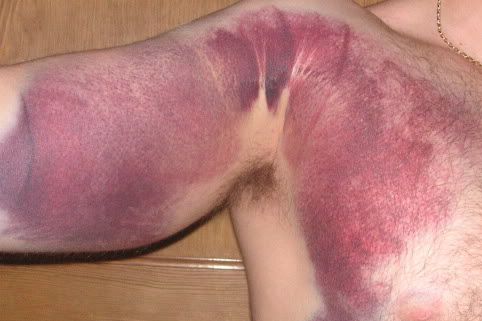
It was after surgery I started to build relationships with a doctor who "got" what I was doing, an orthopedic who knew the sport, risk, my history and goals, and a physical therapist who also "got" what I wanted to do. I still have these same relationships over 20 years later. As a side note, now that I am no longer competitive their advice now falls in line with what most people would get - when I try to "get out of" what they are asking me to do using training as an excuse it doesn't work. These are the types of relationships you want to establish and build. They understand and will help you weigh the risk but when the risk is too high for the goal they will tell you how dumb you are being.
In many cases, while I was competing, they didn't like or agree with what I was proposing, but I still let them know because there's I knew there would be risk associated with it and wanted an expert opinion of what it would be. If it was going to tear back off again, I wanted to know ... wanted them to know why it tore back off. I knew I was creating imbalances, and they helped advise how to work through and around them.
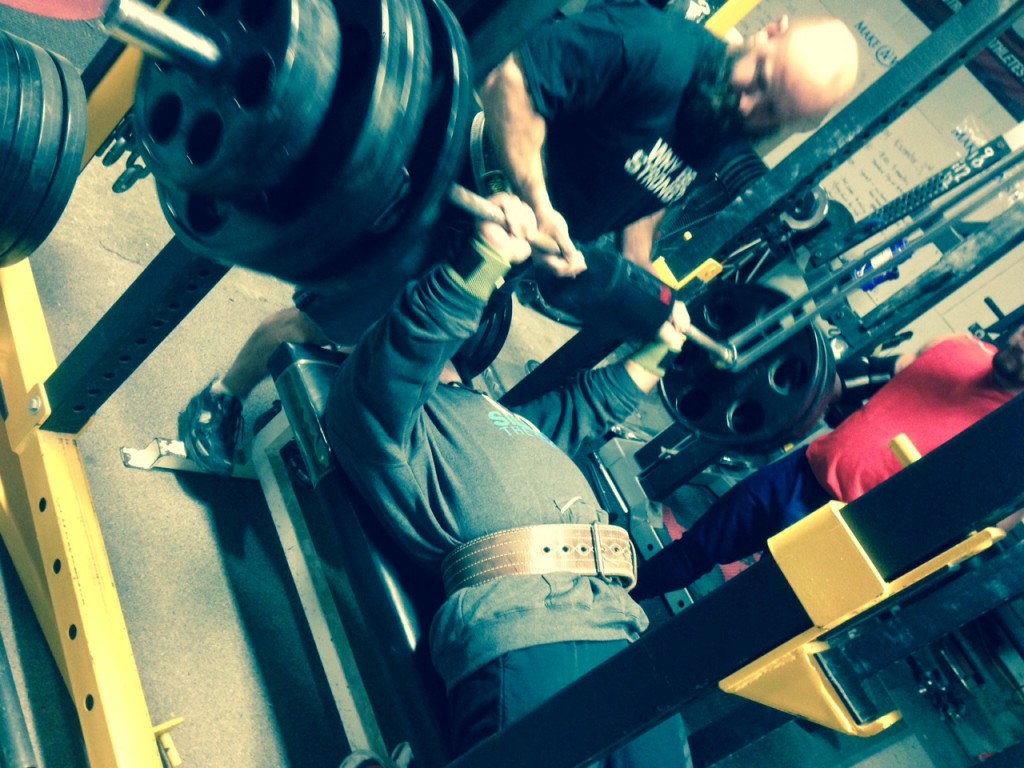
Coming back from a major pec tear was the question. Here is what I did with the major pec tear. I also followed the same protocol with my shoulder surgery and any other upper body injury that I had. I don't advise this. It should be discussed with your orthopedic, doctor or physical therapist. Immediately after surgery, my first goal was to restore range of motion. That meant getting the fucking sling off as soon as I possibly could. The sling was gone the first day with the only exception being training. As soon as the incision looked clean and stopped leaking, I took the staples out.
I began with arm swings to get the muscle moving. The way I saw it, the tendon was screwed into the bone; it wasn't going to pop out (the way I saw it). I knew I couldn't do anything until I had my range of motion back. One of the mistakes that I will admit, to me, the way that I determined the range of motion, was having the ability to grab the bench bar and holding a squat bar on my back. Other than that I didn't care about the range of motion (today I regret that one). Those were the only two ranges of motion that mattered.
This would take 7 to 10 days ... 5 to 7 days was probably the average. It hurt like hell. I'm not going to lie about that. Once that was completed, I had to create stability in the muscle and the joint. Whatever I could come up with to be able to allow that muscle to regain its stability, is what I did. Today there are bamboo bars, tsunami bars, and all kinds of tools I didn't have. I used bands, ropes, sled straps, chains, etc. Throughout this whole process, I always kept training my good arm as hard as I possibly could. Dumbbell presses, front raises, side raises, push downs, one arm pulldowns, one arm rows. Whatever it was, whatever I could do, I did. As well as safety bar squats, one arm deadlifts, suitcase deadlifts, and anything along those lines. The training never stopped regardless of injury.
Once I got to a point where I was able to contract the muscle without a ton of pain, I started doing hundreds of muscle contractions a day. Hundreds if not thousands of times per day. You know that stupid thing you do to make your tits bounce. I would flex, hold for a 2 count, relax and repeat. When I was not able to hold for a 2 count, the set was over. If I had to guess, I would say I did 40-50 sets a day. Each day I added one more second to the flex until I reached a max hold of 5 seconds. Why 5 seconds? Becuase that was how long my max time under tension was with my max effort or dynamic effort work. The primary goal was to get it moving, contracting, getting blood in there. Trying to get everything the way it's supposed to work.
When I was able to hold my arm out, I would start to do ghost bench presses. This began to re-establish range of motion and proper movement pattern. Keep in mind all of this was happening within the first week, post surgery.
Side note: What to do before surgery? I never really understand this question, you train the same way you always have. If your fucked up and can't move the injured areas, you just do what you can do. I looked at it this way, the worst thing that can happen with surgery (the very worst) is death. I am not going out of this world on a fucking de-load.
Once I got to the point where I had the range of motion, and I could do some ghost work I didn't change the training schedule at all. I stuck with that training program I was doing. At this time I was at Westside Barbell Club, so I was expected to be there one way or another, so if I was going to be there I might as well do the same work as everyone else, just scaled. On my max effort days, I still did max effort work. I remember the first max effort day ten days post surgery; I did reverse band presses off a 3-board. The bar only weighed a few pounds, and somebody had to lift it out to me because I wasn't able to reach that far back. It took all I had to be able to press the lockout because my arm did not want to move. It was stunned, shocked. Nerves weren't firing right. It was just messed up. It wasn't like the bar just snapped up. It took everything I had just to push it up. As well as not pushing a whole hell of a lot with my other arm.
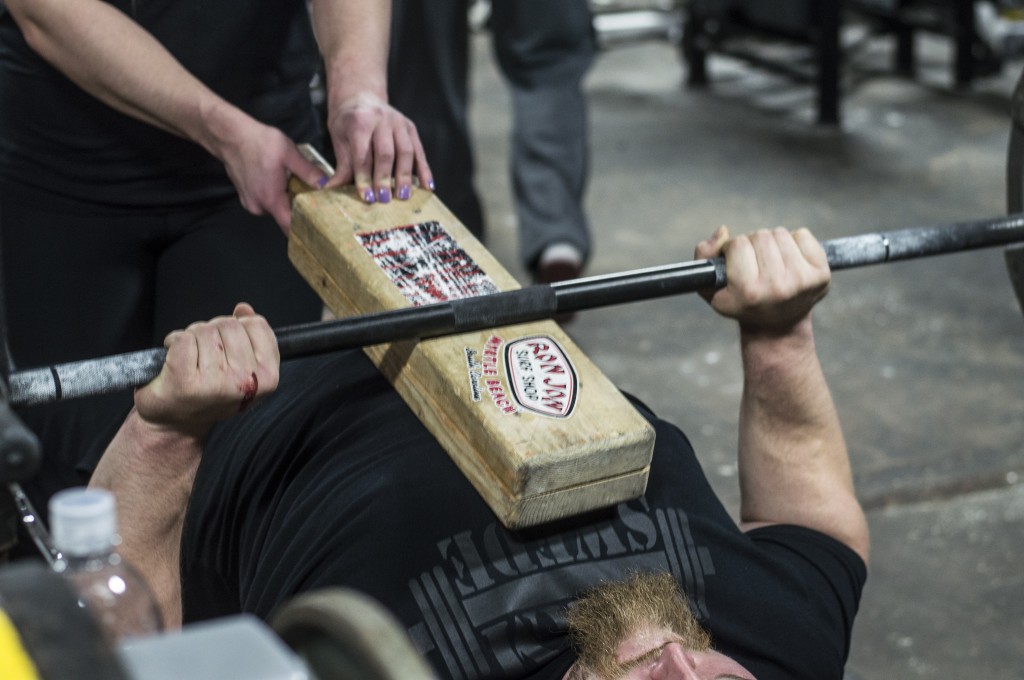
This was still max effort work so I wanted to make sure what I did was maximal effort for where my rehab was at the time. If could have done 10 lbs per side, I did 10 lbs per side. Each week it went up and the boards would come down, and I would start to mix the exercises up based upon what my range of motion would accomplish. I began on a three board because that's all my range of motion would achieve at that time. Then worked it down to a 1-board, and then eventually all the way down to my chest. The key thing was to be able to strain. I wanted my mind to be able to deal with the straining at a very light weight, so when the weight did get heavy again, I would have all the mental shit in the past.
Too many people when they come back from injuries, let's say they tore their pec with 400 lbs, they're smashing shit when they're coming back. Everything is easy. They start getting closer to 400 lbs, and they start to get gun shy. If you're going to get gun shy, let it begin with 45 pounds, not 400. You have MORE of a chance getting hurt being gun shy (scared) than you do staying tight and pushing the weight as you're supposed to. I wanted to start straining at a very light weight and then slowly over a period increase it up. This way I would already have weeks of maximal straining under my belt before the weight got in the range of where I wanted it to be. I didn't always do this with injuries before this and know how it feels to be gun shy.
When it came to the dynamic effort work, I still did it. It might have been a broomstick, but I did it. What I did find over a period is I could no longer do just straight barbell weight for my dynamic pressing. I had to have something to decelerate the bar at the top. Personally, I got more out of using chains with the pec issues than I ever did out of bands. I've seen people make crazy strength gains using the bands, but unless I used them with chains, it was always to much joint stress for me. Chains were pretty much my go to because it just worked better for the pec damage that I had.
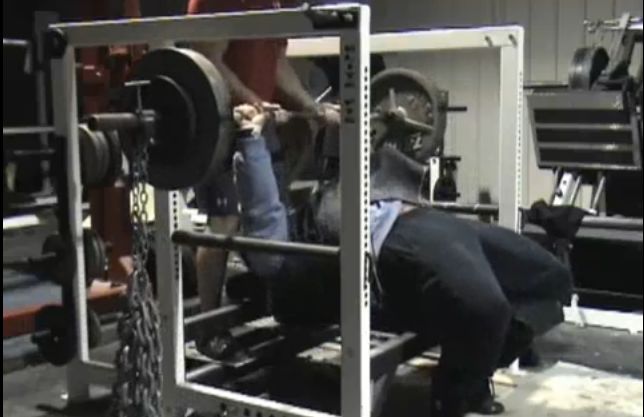
The other thing that I did, from a pec health standpoint, is I added in reverse band presses. I zeroed out the weight. With the rack we were using 95 lbs with an average band was nearly zero pounds throughout the whole lift. 135 with a strong band, was pretty much zeroed out throughout the whole lift. At the end of each training session, I did 100 reps. When I was pressing those reps I would try to not flex very much at all. As soon as I started trying to flex hard with my pecs, or flex hard with my triceps, there was no way I was going to make it through the 100 reps. The reason I wanted to get to 100 reps was I wanted to strengthen the tendon and I wanted to engorge the muscle with blood.
Through the movement that I was doing. Not so much how much blood could stay engorged in the area after I get done doing the movement. It was more movement based blood circulation that I was concerned with. Those reverse band presses became a mainstay for me. At the most when things were good I was doing this 2 to 3 times per week. If my bench was puttering along, then I would drop it down to once per week. Why did I change it? I didn't want my body to get used to any frequency with it because it was the best thing I could do to keep my pecs healthy. I also knew that I rarely ever tore anything when my training wasn't going well. I always tore shit when my training was going well. When the training was going really well is when I would increase the restoration means, and any type of exercising I was doing to try and keep the muscle healthy to avoid injury.
I dropped all stretching. I also stopped doing any type of fly or any adduction movements at all. That was just from trial and error. Every time I started to incorporate stretching or adduction type exercises into my training, I began to have pec tendon problems or bicipital tendon problems. I eliminated them. I eliminated any exercise that I had a history of straining my pecs with. One of those exercises was the pin press. Pin presses or a dead stop press. Starting at the bottom and pressing up. Or ever from the top pressing up. I couldn't handle it. It was more harm than good. If I made it through a session, then typically that next dynamic bench work sucked. There is something about that movement that just did not cooperate with me. Dumbbell presses on a flat bench, did not cooperate with me at all. I eliminated them. Dips did not cooperate, so I eliminated them. Decline presses did not cooperate, so I eliminated them. Things that did help, and I had a very low injury history with were, close grip incline presses, board presses, floor presses, chain presses.
I just increased the number of ways that I could do those movements. That's easy to do when you can start rotating bars, chains, bands, and even angles to a certain degree. On off days when training was going well I would incorporate upper body sled work. Which would be front raises, side raises, presses, and extensions. When you're dragging a sled and you're using the sled straps in your hands for upper body work, there is little eccentric contraction at all. It's probably safe to say there's virtually zero eccentric work.. It's all concentric extractions which again is going to pump blood in there without a lot of muscular breakdown. Which is all I was looking for. Something to help recovery and - or something to serve as a feeder session to leading to the next training session.
As the weights got heavier, and the risk got higher, the day before I would bench, I would do a smaller feeder training session. That would be nothing more than using the bar or 95 lbs for 3 to 5 sets of 20 repetitions. A couple of sets of light triceps extension and maybe 1 set of the reverse band press in the 50 rep range. Nothing to wear the muscle out. Just enough to get the muscle recovered and ready for what was going to hit the next day.
From a passive restoration standpoint, massage therapy didn't do shit for me. If it was a deep massage it made things worse. They would get in there and try to break down the scar tissue and a lot of times that scar tissue was the only thing holding my pec together. When they would get in there and break that down it increased the likely hood that I was going to suffer another strain. I did have luck with saline injections and used them for recovery and after any slight strain.
Things have changed a lot since my time of ultra high rep reverse band presses and saline injections. If I were still having issues today, I would look into some of the advice being provided by Donnie Thompson and Chris Duffin. New things are coming out all the time; some will last, and some will fade away. The key thing to remember is for a muscle to heal it needs blood. Blood heals. Second is to look for why the injury is happening in the first place. Rarely, is this from the injured muscle, that is the effect, not the cause.
Again, this is my story, my history and what I did. This is in no way Medical or Physical Therapy advice.









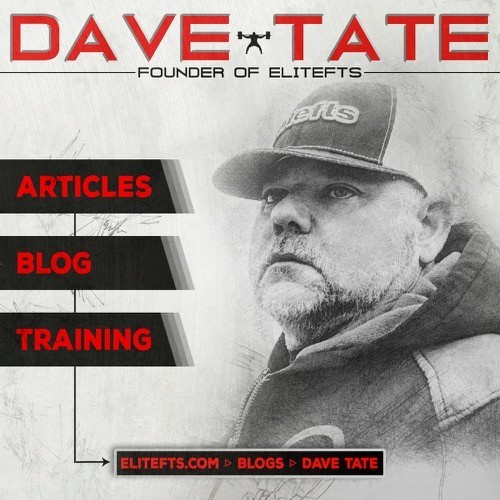
A very interesting account of your experience. I am an emergency physician in Australia and I produce a regular Newsletter for my team. This month I was featuring a short article on the ruptured pec major muscle as most would never have seen it or even be very aware of it. I was wondering if you would grant permission to use the photo of your injury that is on your blog in our newsletter. I can insert a link back to your blog or leave it as anonymous if you prefer.
I fully understand if you do not wish to. Once again it was certainly interesting to read this from the patient perspective. Your last sentence is very sound advice to all doctors regardless of what condition they are dealing with - look for the cause not the effect
Regards from Down Under
Dr Geoff Ramin